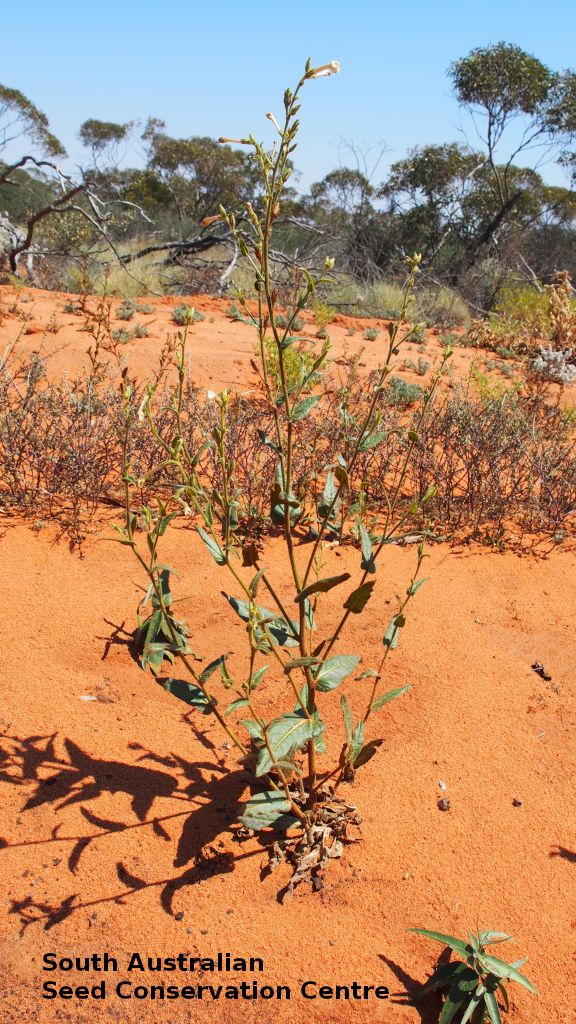
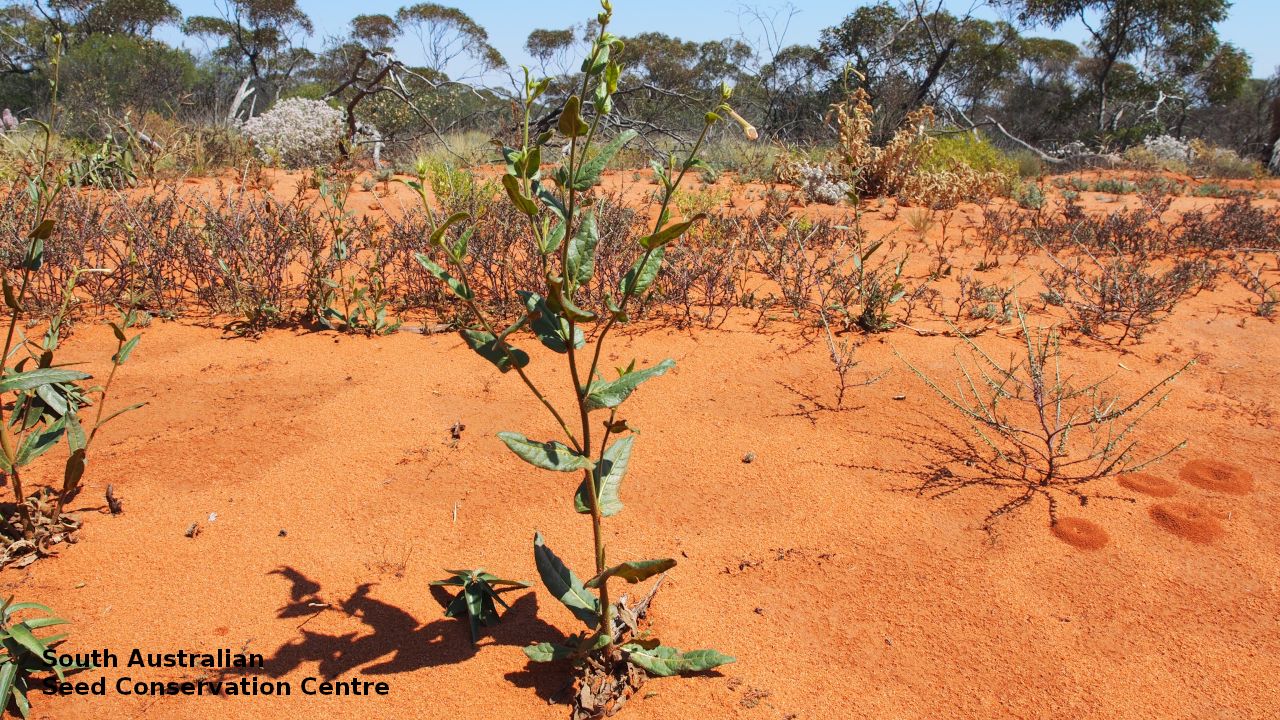
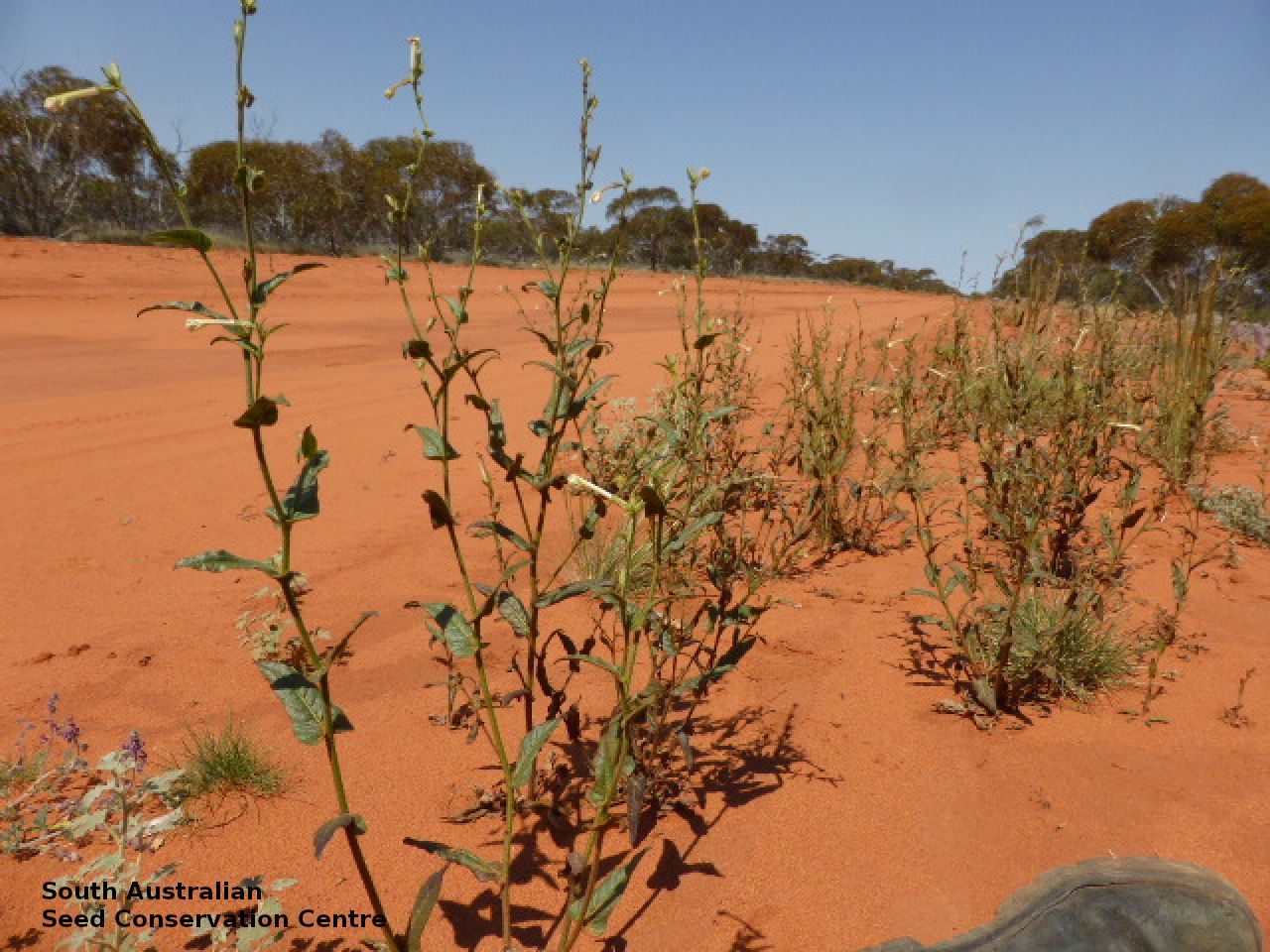
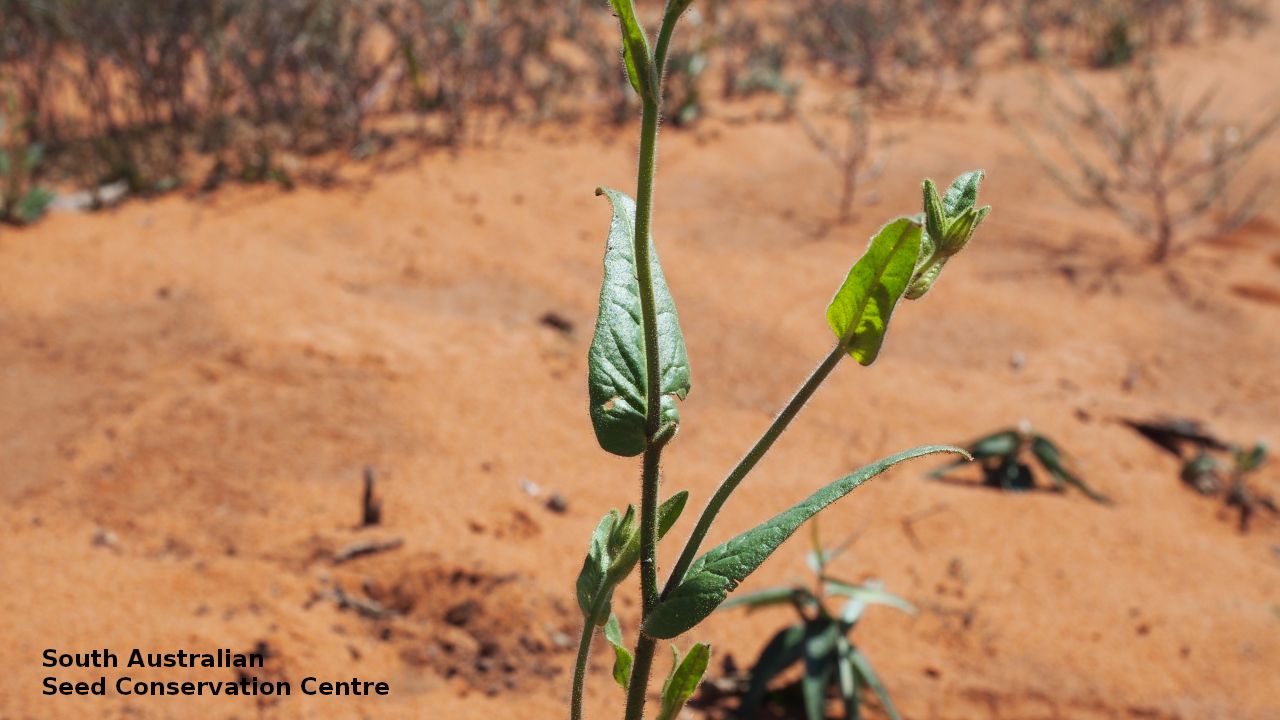
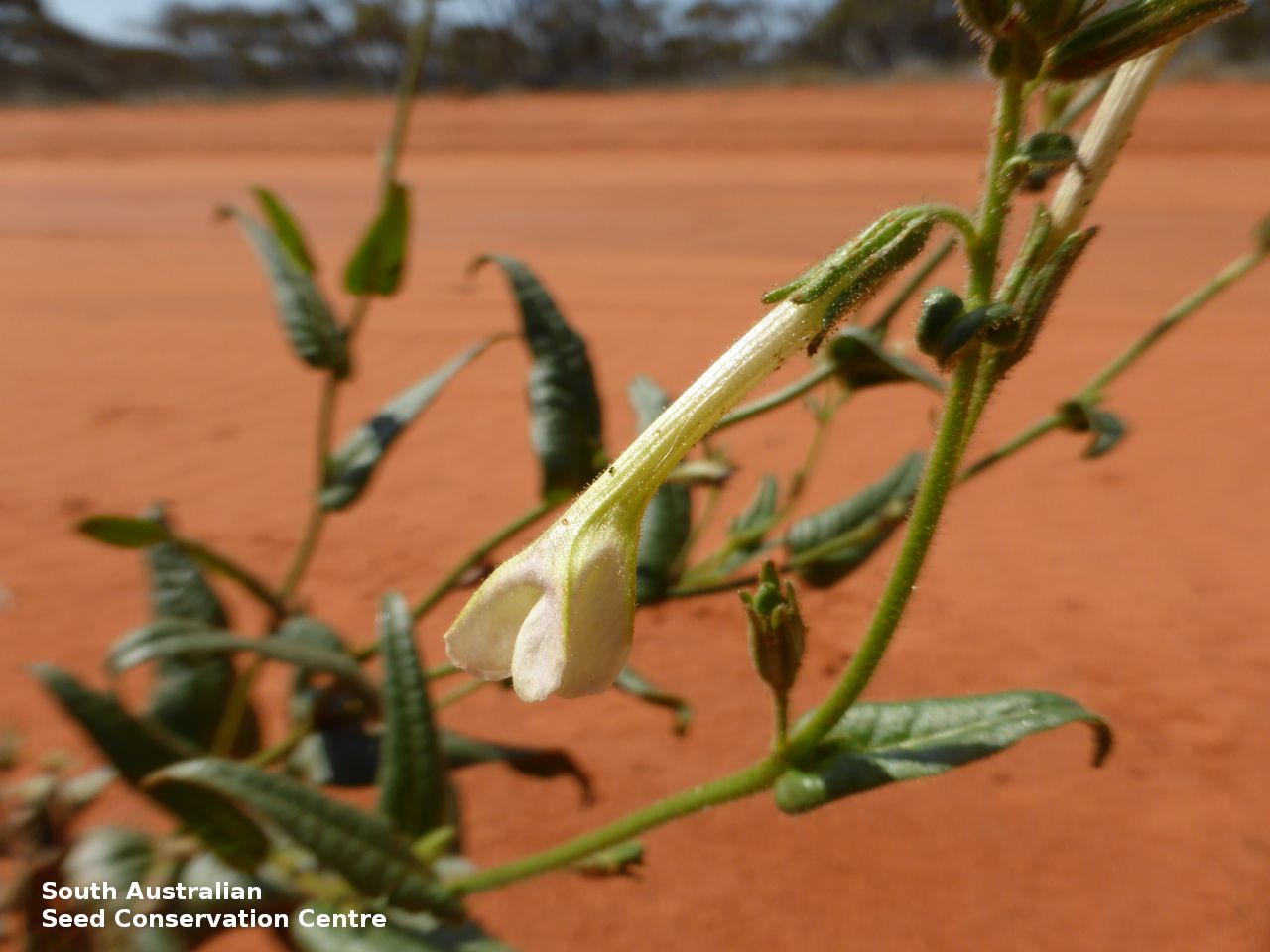
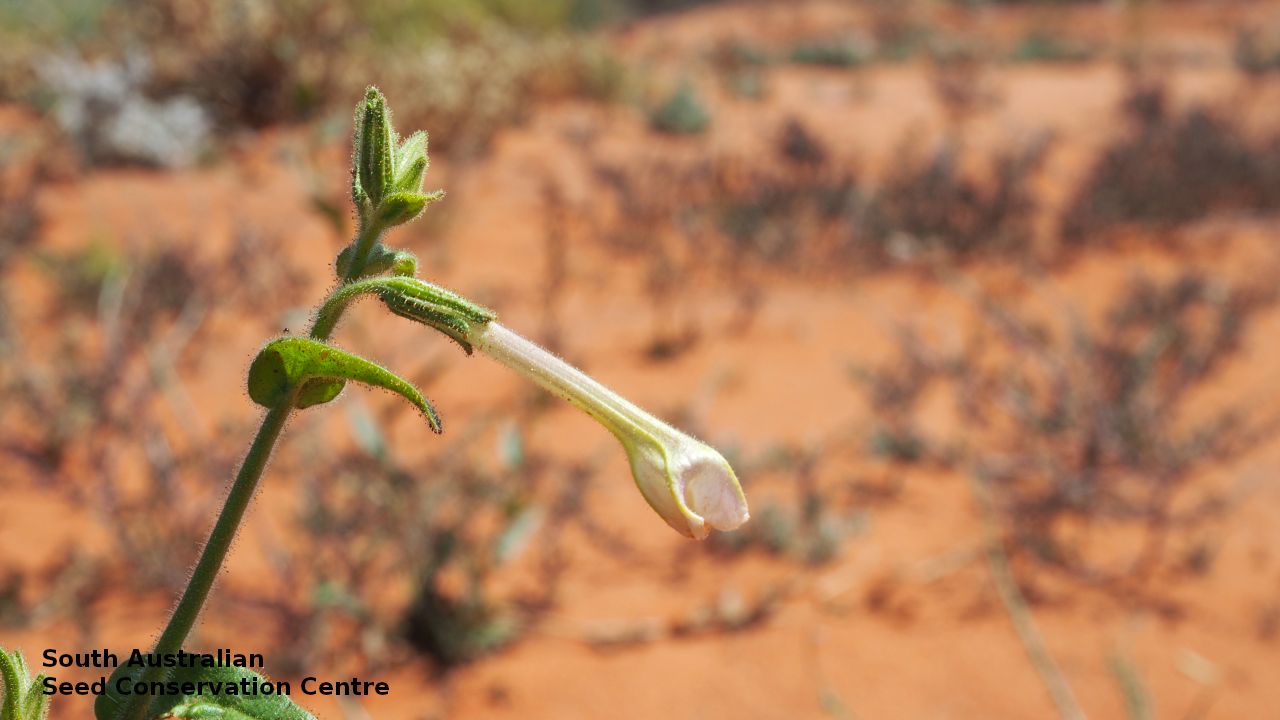
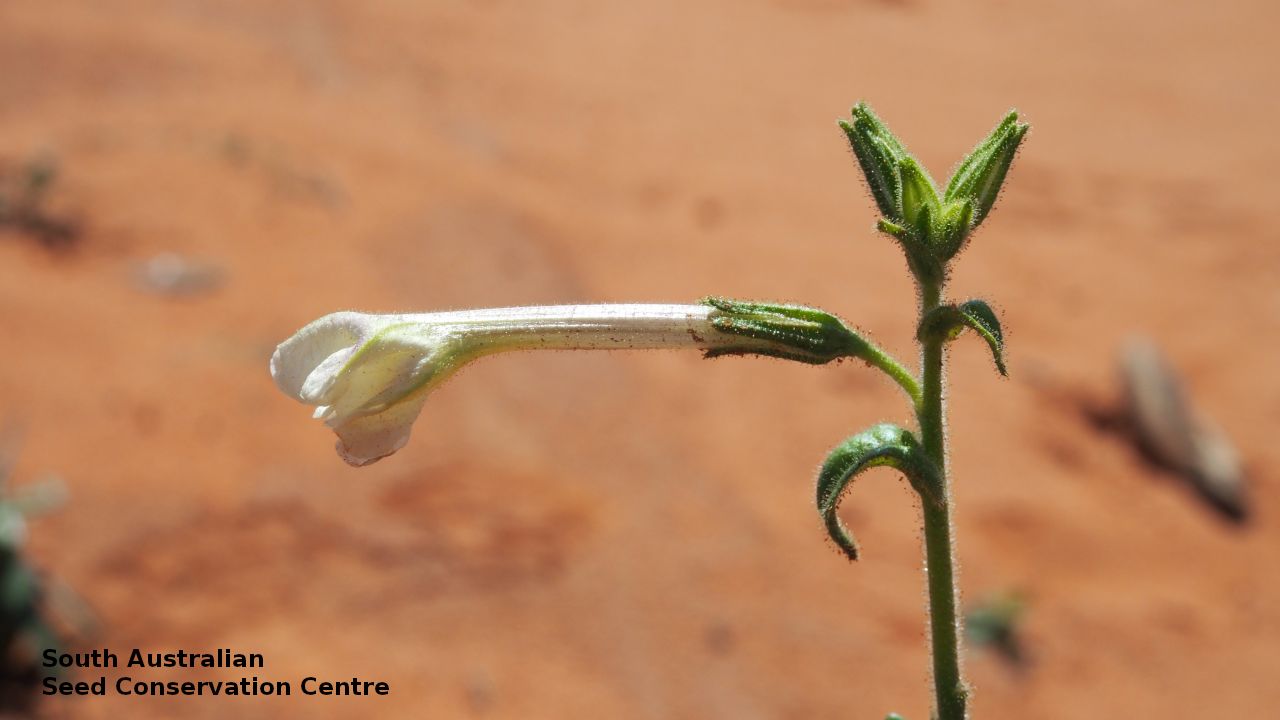
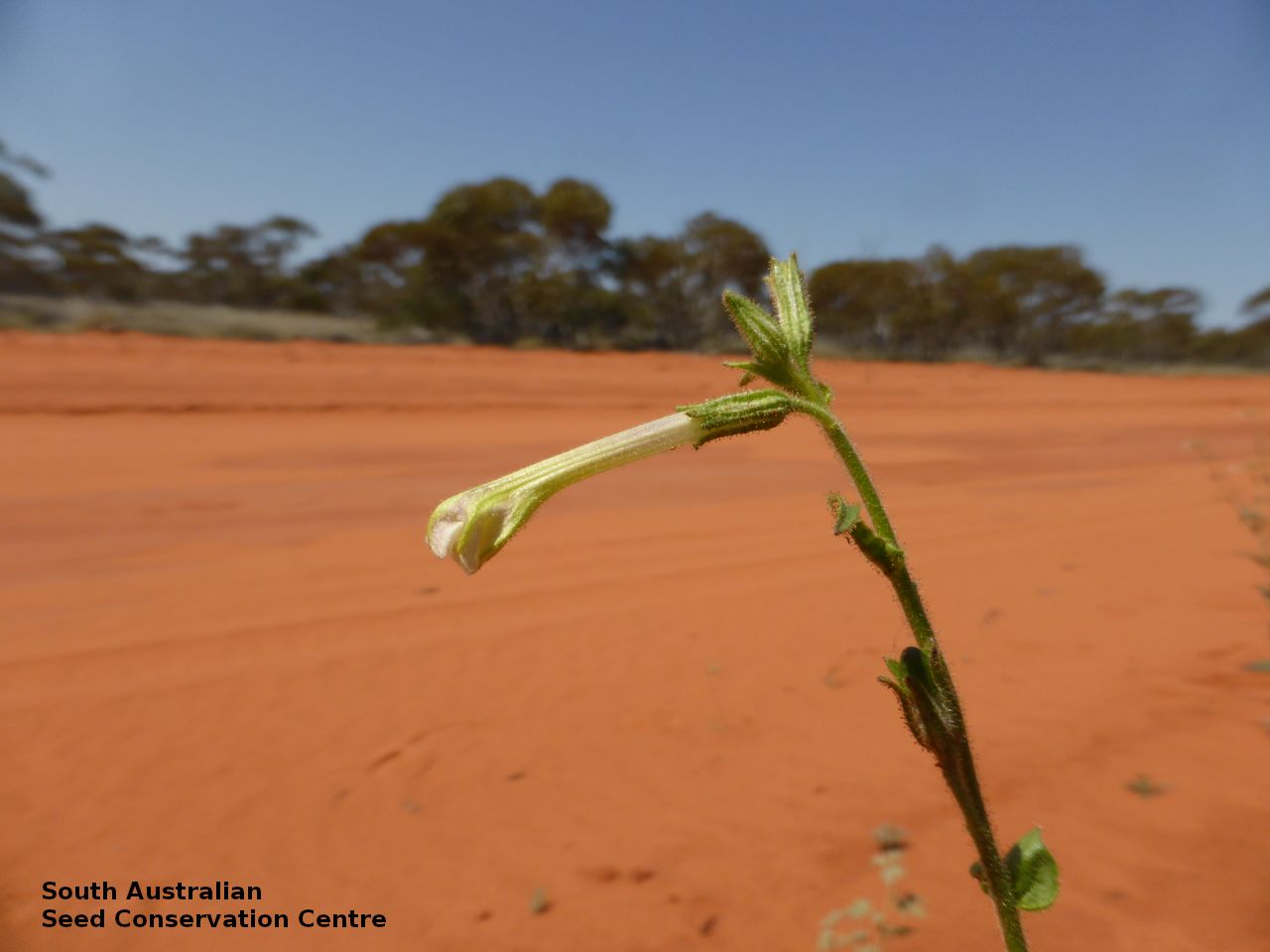
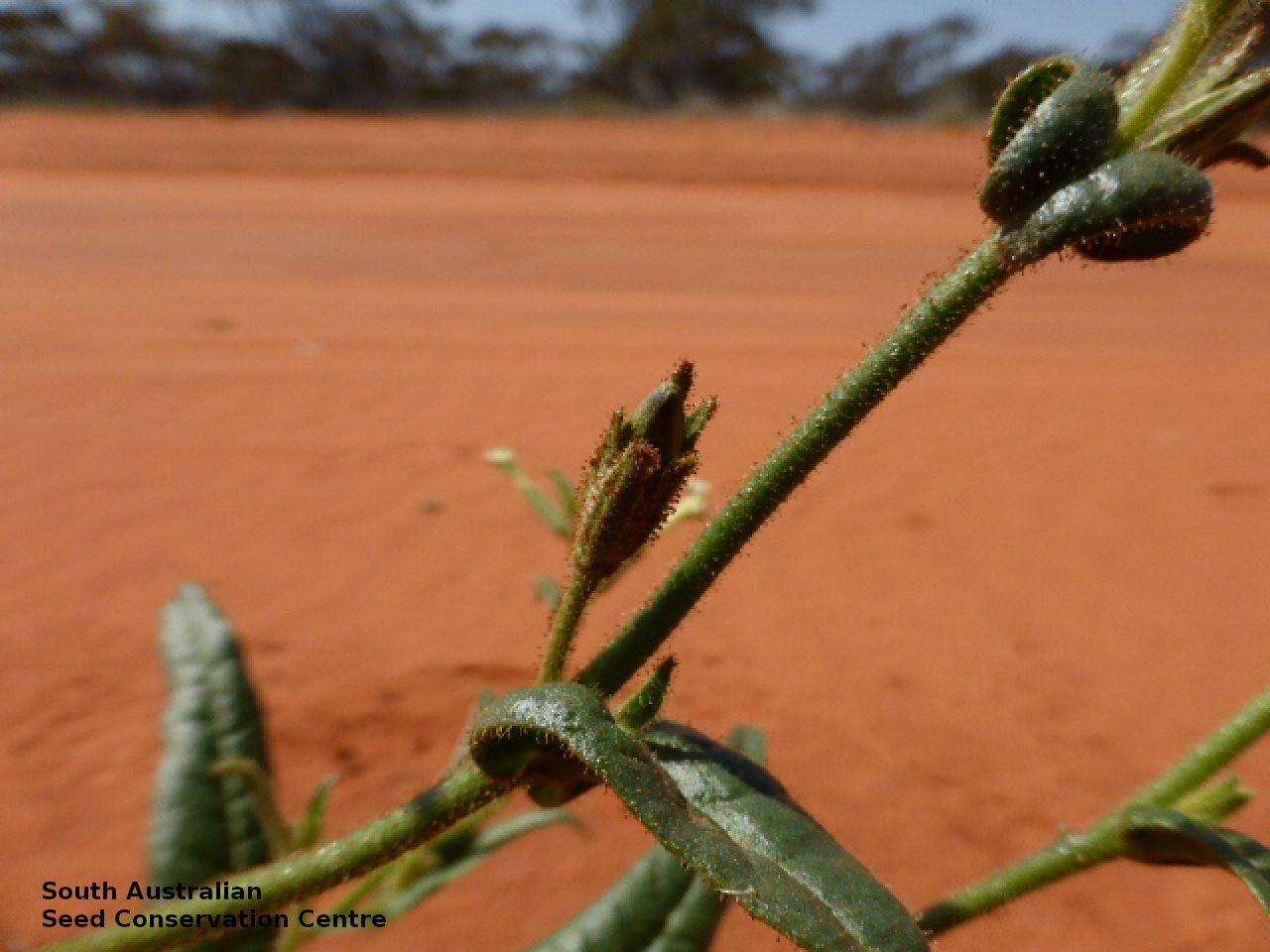
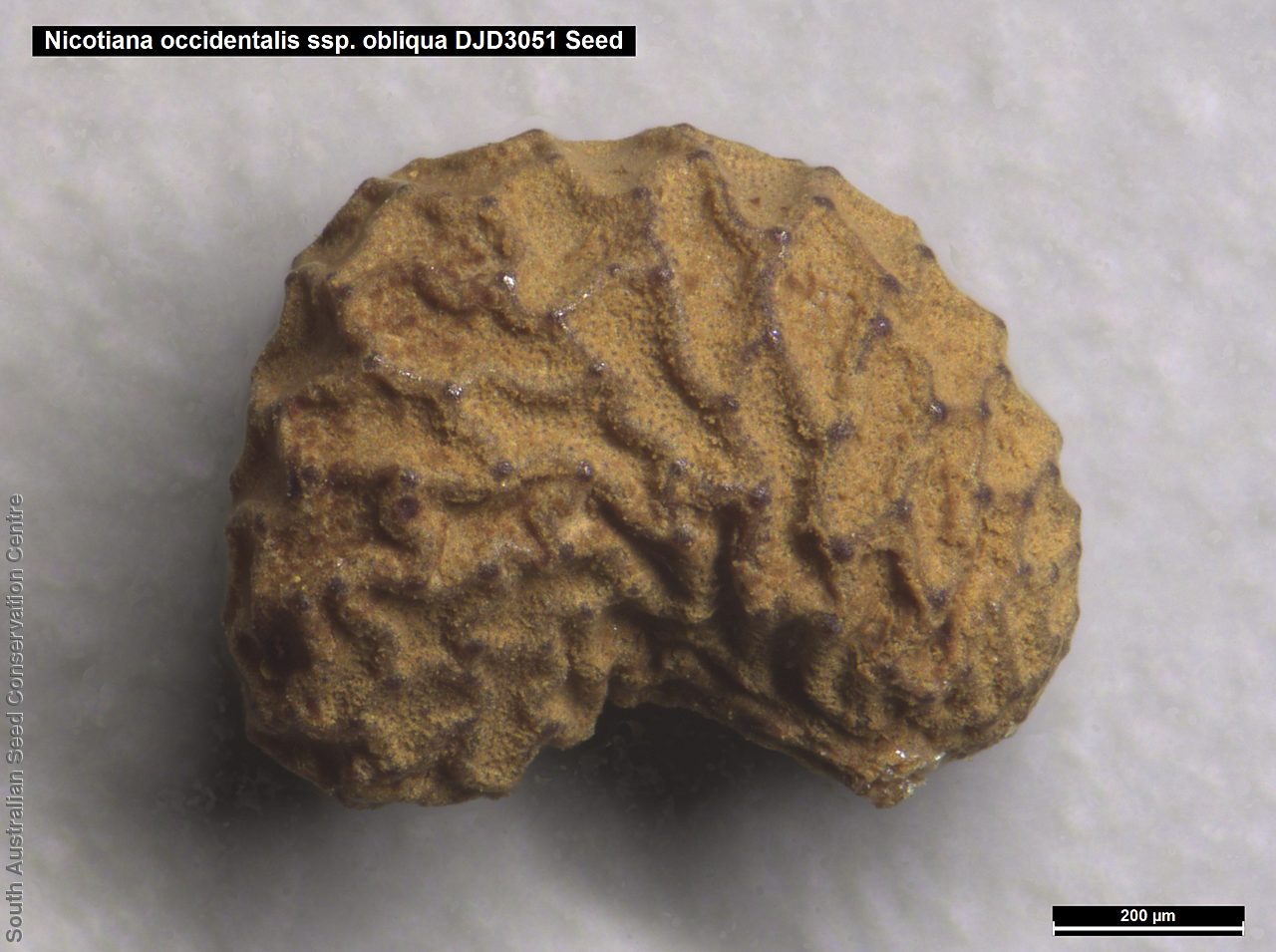
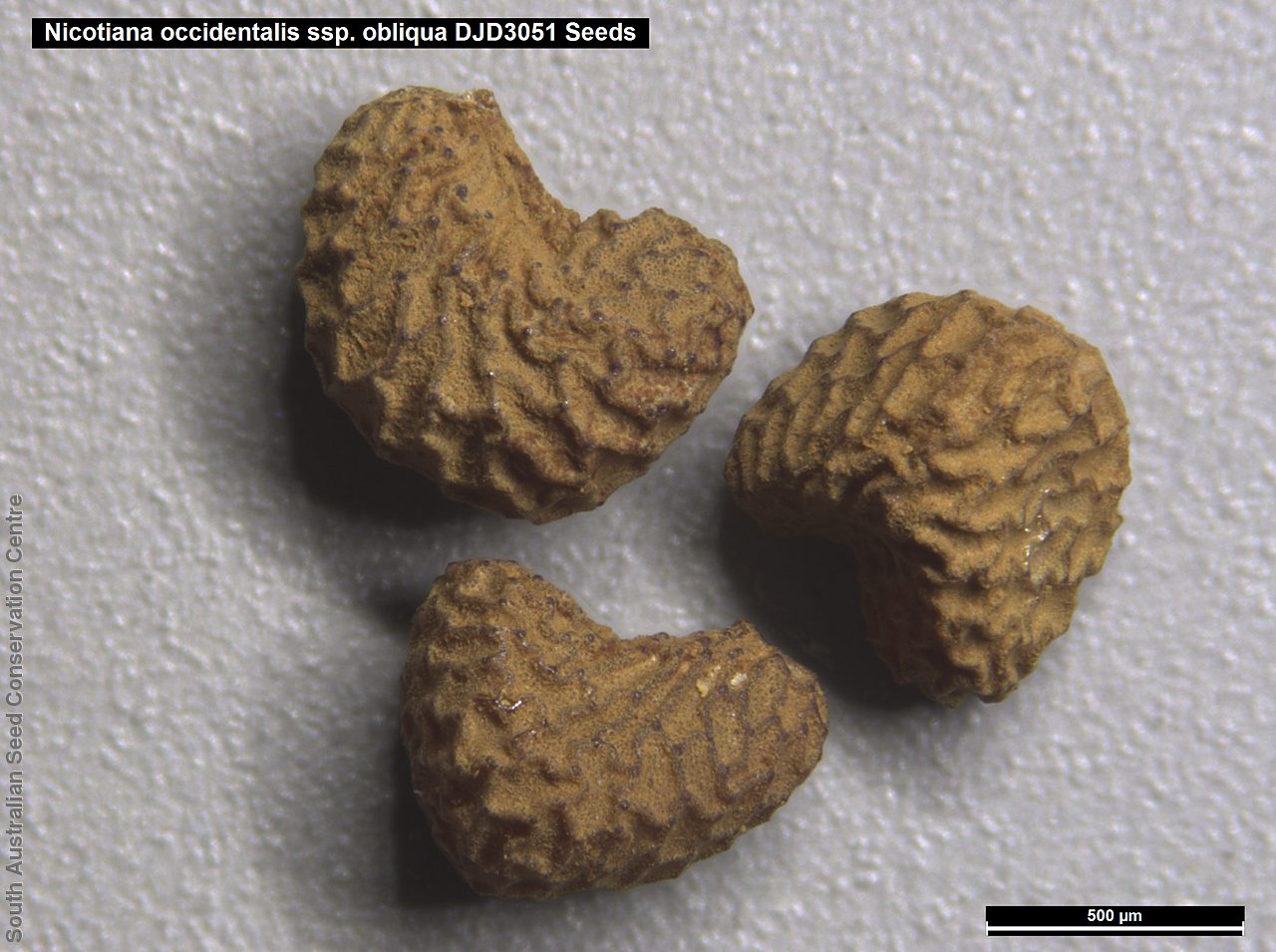

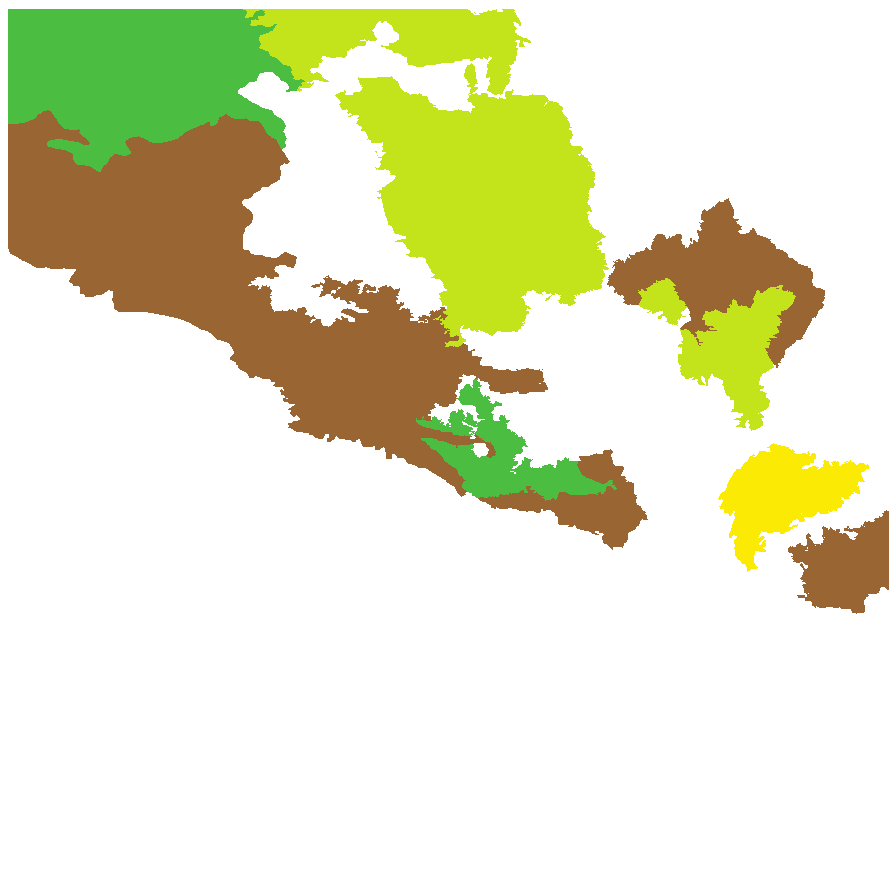
Botanical art
Common names
Western Tobacco
Etymology
Nicotiana, named after Jean Nicot (1530-1600), a French Ambassador for the King of France to Lisbon in 1560, who sent the first tobacco plant to France. Occidentalis, from Latin meaning western, alluding to the distribution of the species in the western part of Australia. Obliqua, from the Latin 'obliquus' , meaning oblique, possibly referring to the acutely angled seed.
Distribution and status
Found in the northern part of South Australia, growing in sandy or rocky areas, often along creeklines or in shelter of boulders or trees. Also found in Western Australia, Northern Territory, Queensland and New South Wales. Native. Common in South Australia. Uncommon in New South Wales. Common in the other States.
Herbarium regions: North Western, Lake Eyre, Nullarbor, Gairdner-Torrens, Flinders Ranges, Murray
AVH map: SA distribution map (external link)
Plant description
Herb to 1.3 m high with dense, sticky glandular hairs. Basal leaves elliptic, to 20 cm long and to 8 cm wide. Stem leaves narrower; the upper ones fiddle-shaped or lanceolate and sessile. Inflorescence erect, few branching panicle-like spike with tubular white flowers. Flowering between July and October. Fruits are brown ellipsoid to ovoid capsule to 14 mm long. Seeds are brown reniform seed to 0.7 mm long and 0.5 mm wide, covered in net-like surface. Seed embryo type is linear, fully-developed.
Seed collection and propagation
Collect seeds between October and December. Collect mature capsules, those that are brown or turning a pale straw colour and contain brown seeds. Can collect individual capsules or break off the whole fruit spike. Place the capsules in a tray and leave to dry for one to two weeks. Then rub the capsules gently by hand to dislodge the seeds. Use a sieve to separate the unwanted material. Store the seeds with a desiccant such as dried silica beads or dry rice, in an air tight container in a cool and dry place.
| Location | No. of seeds (weight grams) | Number of plants | Date collected | Collection number Collection location | Date stored | % Viability | Storage temperature |
|---|---|---|---|---|---|---|---|
| BGA MSB | 90,000 (8.93 g) 90,000 (8.93 g) | 50+ | 25-Sep-2014 | DJD3051 North Western | 1-Jan-2016 | 90% | -18°C |
Number of plants: This is the number of plants from which the seeds were collected.
Collection location: The Herbarium of South Australia's region name.
% Viability: Percentage of filled healthy seeds determined by a cut test or x-ray.